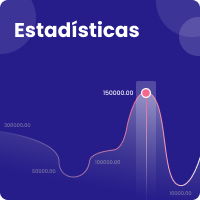Perceptions of health professionals on non-pharmacological measures for the management of chronic pain
DOI:
https://doi.org/10.21615/cesenferm.6306Keywords:
chronic pain, qualitative research, ethnography, nursing researchAbstract
Introduction: pain as a multi-causal problem is mainly addressed, only from the pharmacological field. Which, hinders a comprehensive management of patients. Objective: to identify the perceptions of a group of health professionals (nursing and medicine professionals) from Medellín city, regarding the use of non-pharmacological measures for the treatment of chronic pain in adults. Methodology: qualitative research with a particularistic ethnographic approach. The participants were selected through the snowball technique and contacted by telephone to arrange an in-depth face-to-face interview. A transcription and analysis of information was carried out simultaneously, until a category map was built. Results: four realities determine the use of non-pharmacological treatment by professionals in medicine and nursing. These are: the conception of pain that each health professional has, professional training, experience and the scope of health institutions. Conclusion: although non-pharmacological management can be effective, there is little training of professionals in pain management, and barriers such as the social and cultural context, the westernization of knowledge, bureaucratization of the health system, protocolization of care, lack of credibility in this type of treatment and financial difficulties to access this type of therapy.
Downloads
References
Araújo M, Scheffer V, Viera C. Pain as the fifth vital sign: nurse’s practices and challenges in a neonatal intensive unit care. Brazilian Journal Of Pain [Internet]. 2019 [citado 8 de noviembre de 2021]. Disponible en: https://www.scielo.br/scielo.php?script=sci_arttext&pid=S2595-31922019000300232&lng=en&nrm=iso&tlng=en
Benavides C, Montoya C, Nel J. El dolor, quinto signo vital. Fascicul08. 2010; 1:02-7.
Treede RD, Rief W, Barke A, Aziz Q, Bennett MI, Benoliel R, et al. Chronic pain as a symptom or a disease: the IASP Classification of Chronic Pain for the International Classification of Diseases (ICD-11). PAIN. 2019;160(1):19-27. [citado 10 de octubre de 2021]. DOI: 10.1097/j.pain.0000000000001365
Kopf A, Patel N, editores. Guía para el manejo del Dolor en condiciones de bajos recursos. [Internet]. Washington, D.C: International Association for the Study of Pain; 2010 [citado 22 de enero de 2021]. 412 p. Disponible en: https://s3.amazonaws.com/rdcms-iasp/files/production/public/Content/ContentFolders/Publications2/FreeBooks/GuidetoPainManagement_Spanish.pdf
Mencías AB, Rodríguez JL. Trastornos del sueño en el paciente con dolor crónico. Rev Soc Esp Dolor. [Internet]. Diciembre de 2012;19(6):332-4. [citado 10 de octubre de 2021]. Disponible en: https://scielo.isciii.es/pdf/dolor/v19n6/revision4.pdf
Arango CA, Rincón HG. Trastorno depresivo, trastorno de ansiedad y dolor crónico: múltiples manifestaciones de un núcleo fisiopatológico y clínico común. Rev Colomb Psiquiatr. [Internet]. 2018;47(1):46-55. [citado 22 de enero de 2021]. Disponible en: http://www.scielo.org.co/scielo.php?pid=S0034-74502018000100046&script=sci_abstract&tlng=es
Failde I. El dolor crónico, algo más que un problema de quien lo padece. Rev Soc Esp del Dolor. [Internet] 2014;21(1):2. DOI: 10.4321/S1134-80462014000100001 Disponible en: https://scielo.isciii.es/scielo.php?script=sci_arttext&pid=S1134-80462014000100001
Guerreiro M, Gómez MP. Estudio nacional sobre prevalencia, características e incapacidad asociada al dolor en la población colombiana [Internet]. Dolor. 2019;8(1):17-26. [citado 8 de Diciembre de 2021]. Disponible en: https://dolor.org.co/biblioteca/revistas/Revista%208_1.pdf#page=17
Moscoso J. El dolor como epidemia [Internet]. Pasaj Rev Pensam Contemp. 2015;48:30-8. [citado 22 de enero de 2021]. Disponible en: http://digital.csic.es/handle/10261/166554
Chou R, Deyo R, Friedly J, Skelly A, Hashimoto R, Weimer M, et al. Nonpharmacologic Therapies for Low Back Pain: A Systematic Review for an American College of Physicians Clinical Practice Guideline [Internet]. Ann Intern Med. 2017;166(7):493-505. [citado 22 de enero de 2021]. Disponible en: https://www.acpjournals.org/doi/10.7326/m16-2459. DOI: 10.7326/m16-2459
Tick H, Nielsen A, Pelletier KR, Bonakdar R, Simmons S, Glick R, et al. Evidence-Based Nonpharmacologic Strategies for Comprehensive Pain Care: The Consortium Pain Task Force White Paper [Internet]. 2018;14(3):177-211 [citado 20 de enero de 2021]. DOI: 10.1016/j.explore.2018.02.001
Pavez FJ. Agentes físicos superficiales y dolor: Análisis de su eficacia a la luz de la evidencia científica. Rev Soc Esp Dolor. 2009;16(3):182-9.
Moix I. Terapias Psicológicas para el Tratamiento del Dolor Crónico. Clínica Salud. marzo de 2011;22(1):41-50.
Martínez Miguel. La investigación cualitativa etnográfica en educación: manual teórico-práctico. México: Trillas; 1998.
Serrano A. Nuevo Ensayo en Fenomenología del Dolor. Ápeiron Estudios de Filosofía. 2015; 3: 129-135.
Malpica CR, Díaz JE, Esser MR. Complejidad del dolor y el sufrimiento humano. Rev Latinoam Psicopatol Fundam. 2004;7(3):70-81.
Zaki J, Wager TD, Singer T, Keysers C, Gazzola V. The Anatomy of Suffering: Understanding the Relationship between Nociceptive and Empathic Pain. Trends Cogn Sci. 2016;20(4):249-59.
Achury DM. Dolor: la verdadera realidad. Aquichan. 2008;8(2):13.
Zavala M, Fernanda G. Nursing Students’ Knowledge and Management of Pain. Aquichan. 2008;8(2):212-26.
Ramirez M. La propuesta de Max Scheler como resolución ante el problema de la ininteligibilidad del dolor. STOA Revista del Instituto de Filosofía de la Universidad Veracruzana. 2020;11(21): 82-97.
Castro H, Jairo J. La mal llamada medicina alternativa. Rev Cienc Salud. 2017;15(1):5-6.
Achury D. Aplicación de la teoria de los sintomas desagradables en el manejo del dolor. Investig En Enferm Imagen Desarro. 2007;9(1):7-18.
McCloskey JC, Bulechek GM. Clasificación de intervenciones en enfermería (NIC), cuarta edición. Madrid: Elsevier; 2005.
Downloads
Published
How to Cite
Issue
Section
License
Copyright (c) 2022 CES Enfermería

This work is licensed under a Creative Commons Attribution-NonCommercial-ShareAlike 4.0 International License.
| Article metrics | |
|---|---|
| Abstract views | |
| Galley vies | |
| PDF Views | |
| HTML views | |
| Other views | |




